
David Anderson
Originally written in November 1998
Doing geodesic mathematics is one thing; actually making stuff is art. The following pictures are some of the models and structures I've made over the last year. It's a lot of fun, but it's also intricate work sometimes... You can skin a few knuckles making bigger domes, and turn your fingers to raw meat bending pipe cleaners...
The first dome I tried building was made of popsicle sticks and wire. It was a good idea, but the sticks weren't long enough to distribute the error of the hieghts of the stack at a vertex. I saved it for posterity...
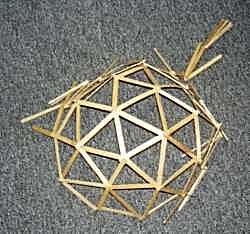
Most of the world's geodesics are based on the icosahedron. Here is a soda straw and pipe cleaner model...
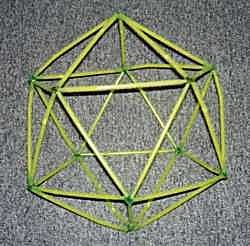
The main project was the bolted PVC pipe framework for the greenhouse. The dome is 2-frequency, semi-spherical and 11 feet in diameter...


The vertices are connected with a 1/4 inch bolt through the front and fastened in the back with a wing nut for quick assembly. The front of a joint...
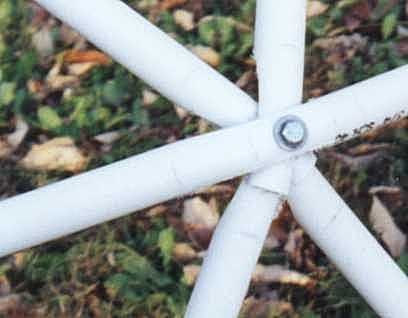
The back of a joint...
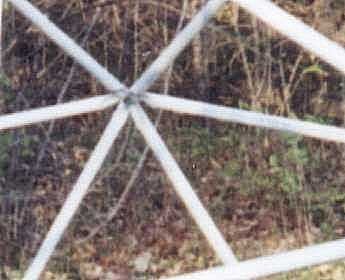
The most interesting work I did was the planning of a large dome. This required the warping of the octet truss; the truss is warped proportionally though, maintaining its maximum strength to resist radially applied forces. The large dome was planned at 10-frequency with an internal truss; the coffee stirrer and pipe cleaner model is 6-frequency. Two patches were constructed and connected by a ladder of struts.
Front view, straight on...
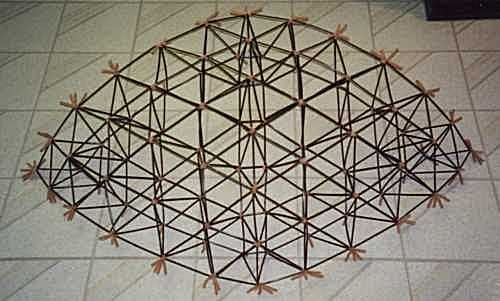
Front 3/4 side view...
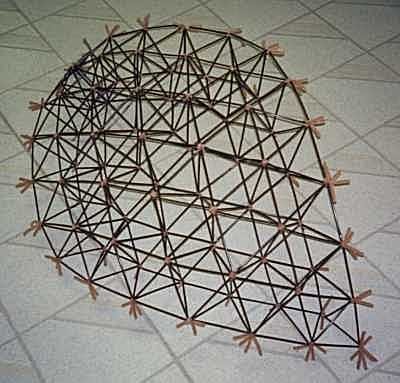
Rear 3/4 side view at an angle...

Finally, a semi-completed tetrahedral geodesic sphere is modeled, with an internal truss...
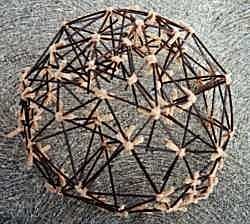
Many thanks to Bob Schulze, who scanned the images for me. I owe you a beer, my friend.